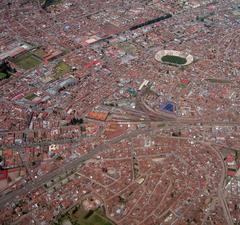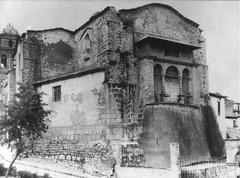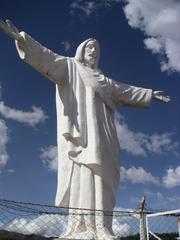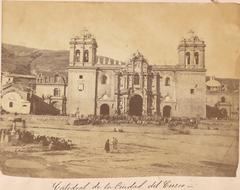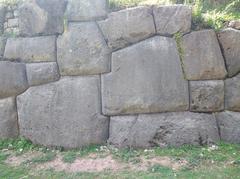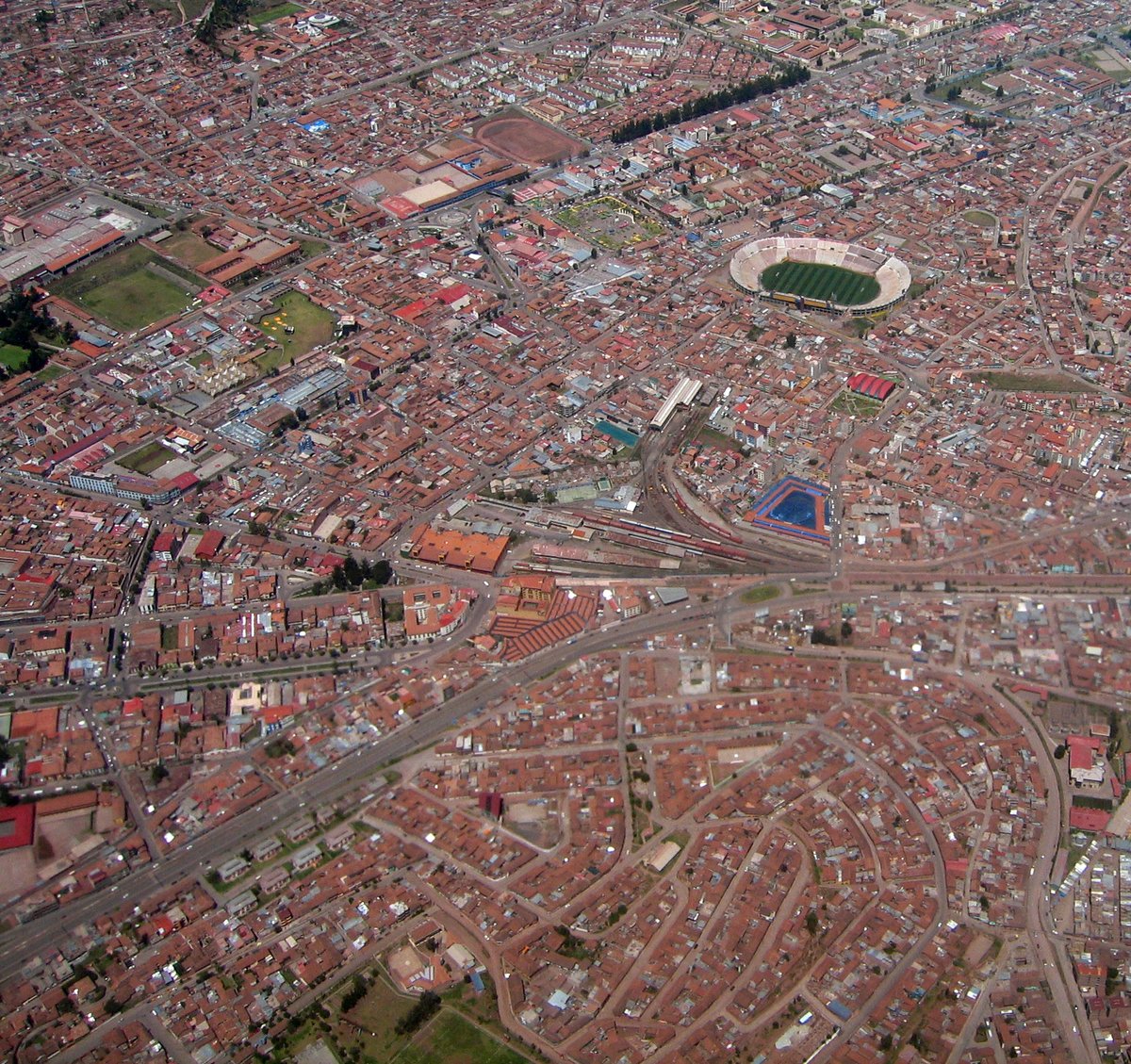
Estadio Garcilaso Visiting Hours, Tickets, and Cusco Historical Sites Guide
Date: 15/06/2025
Introduction
Estadio Inca Garcilaso de la Vega—known locally as Estadio Garcilaso—stands as both Cusco’s premier sporting venue and a significant cultural landmark. Named for the famed mestizo chronicler Garcilaso de la Vega, the stadium encapsulates the city’s blend of Inca and Spanish colonial heritage. Since its inauguration in 1958, Estadio Garcilaso has hosted local football teams, major national and international events, and has become a vibrant hub for community gatherings, contributing to Cusco’s unique identity (Wikipedia; World of Stadiums).
This guide provides detailed, practical information for visitors: from historical context and architectural features to visiting hours, ticketing, accessibility, and travel tips. It also highlights the stadium’s role in Cusco’s social life and how to combine your visit with exploring the city’s renowned historical sites.
Contents
- Introduction
- Historical Overview
- Visiting Information
- Stadium Features and Facilities
- Cultural and Social Significance
- Travel Tips and Nearby Attractions
- Visitor FAQ
- Conclusion
- Sources and Further Reading
Historical Overview
Origins and Naming
The stadium is named after Inca Garcilaso de la Vega, the mestizo historian and writer who played a pivotal role in recording Peru’s indigenous and colonial history. This choice reflects Cusco’s pride in its dual cultural legacy and underscores the stadium’s symbolic importance in the region (Wikipedia).
Construction, Expansion, and Modernization
Estadio Garcilaso was constructed in the 1950s, opening its doors in 1958 with a capacity between 22,000 and 30,000. Over the decades, it underwent significant expansions, notably for the 2004 Copa América—raising its capacity to more than 42,000 and updating infrastructure with modern amenities (Cusco Tours Peru; footballtripper.com). Further renovations in 2013 added luxury seating, and ongoing improvements continue to bring the stadium closer to international standards, though some features remain under development (Diario El Sol Cusco).
Role in Football and Community
Estadio Garcilaso is the home ground for Cusco’s key football teams—Cienciano, Deportivo Garcilaso, and Cusco FC. It is renowned for hosting Cienciano’s historic 2003 Copa Sudamericana triumph, Peru’s only international club title. Regularly, the stadium welcomes fervent crowds for Liga 1 matches, national finals, and international friendlies, cementing its reputation as one of the nation’s most iconic football venues (Valencia Travel Cusco; iPeru).
Visiting Information
Location
Estadio Garcilaso is centrally located in Cusco’s Wanchaq district, bordered by Avenida Manco Cápac, Calle Mariscal Castilla, Jirón 9 de Octubre, and Jirón 24 de Junio. Its position makes it easily accessible for both locals and tourists (pdfcoffee.com).
Visiting Hours
- Standard Hours: 9:00 AM to 6:00 PM on non-match days.
- Match/Event Days: Gates open typically 90–120 minutes before kickoff.
- Guided Tours: Offered occasionally; confirm schedules via the stadium’s official channels or local tourism offices.
Note: Hours may change during special events or holidays. Always check in advance.
Ticket Information
- Match Tickets: Purchase online via official club websites, authorized vendors, or at the stadium box office. Prices typically range from 20–120 soles, depending on the event and seat location (Tips.GG).
- Non-Match Entry: Stadium tours may be free or require a nominal fee—verify current policies before planning your visit.
Entry and Security
- Multiple gates, clear signage, and security checks (bag inspections, metal detectors).
- Prohibited items: large bags, umbrellas, outside food/drinks, and professional camera equipment.
- Arrive early to avoid queues, especially for high-attendance matches.
Accessibility
- Wheelchair Access: Ramps and some designated seating exist; however, the main elevator is currently out of service, and some stairways are unfinished (qosqotimes.pe).
- Restrooms: Available, but can become crowded during halftime; bringing tissues or sanitizer is recommended.
Stadium Features and Facilities
Capacity and Layout
- Official Capacity: Approximately 42,000 spectators (third-largest stadium in Peru).
- Area: Covers 22,684 m² with a perimeter of 776.8 meters (pdfcoffee.com).
- Seating: Divided into general, preferred, and VIP sections.
Playing Surface
- Natural Grass: Maintained at high standards despite Cusco’s altitude and climate. Briefly used synthetic turf in 2013, reverted to grass due to player and fan preference (footballtripper.com).
Architecture and Modernization
- Design: Blends modern elements with Andean motifs. Renovations added a dual-color PVC membrane facade and planned a modern roof structure (partial roof coverage as of 2025) (pdfcoffee.com; qosqotimes.pe).
- Lighting: First in Peru to install an intelligent LED lighting system managed with Interact Sports platform (es.wikipedia.org).
- Security: Limited CCTV coverage; remain vigilant in crowded areas.
Facilities
- Concessions: Local snacks and beverages sold at stands.
- Parking: Planned underground parking is not fully operational; street parking is limited.
- Interior Spaces: Locker rooms and administrative areas exist but some remain unfinished or underused.
Cultural and Social Significance
Estadio Garcilaso is more than a sports venue; it is a focal point of community life in Cusco. On match days, the stadium’s surroundings fill with fans, food vendors, and local color. It hosts not only football games but also concerts, festivals, and civic events, reinforcing its importance as a gathering space (Valencia Travel Cusco; Veronika’s Adventure).
The stadium’s integration into local festivals, such as Inti Raymi and Cusco’s Tourist Week, as well as its support for youth leagues and school tournaments, further deepen its role in fostering community pride and development (The Only Peru Guide).
Travel Tips and Nearby Attractions
Getting There
- From the Airport: 20 minutes by taxi from Alejandro Velasco Astete International Airport.
- From Bus Terminal: 10 minutes by taxi from Terminal Terrestre de Cusco.
- Public Transit: Colectivos (shared minibuses), local buses, or walking from the historic center (approx. 1.5 km; consider altitude and hills).
Weather and What to Bring
- Dry Season (May–September): Best for visits; daytime highs ~18°C, cold nights.
- Wet Season (Nov–Mar): Bring rain gear; umbrellas are not permitted inside.
- Dress in Layers: Temperatures change quickly.
- Sun Protection: At high altitude, UV exposure is strong.
Altitude Consideration
Cusco sits at 3,399 meters (11,152 feet). Plan to acclimatize for 24–48 hours before strenuous activity. Drink plenty of water and avoid heavy meals or alcohol on your first day (Along Dusty Roads).
Language and Safety
Spanish is the primary language; staff may speak limited English. Use a translation app if needed. Standard tourist precautions apply: beware of pickpockets in crowds, carry only essentials, and keep valuables secure (Lonely Planet).
Nearby Attractions
- Plaza de Armas – Cusco’s historic heart.
- Qorikancha (Temple of the Sun) – Ancient Inca temple with colonial church above.
- San Pedro Market – Bustling market for local food and crafts.
- Sacsayhuamán Fortress – Impressive Inca ruins just above the city.
Visitor FAQ
Q: What are the visiting hours for Estadio Garcilaso?
A: Generally 9:00 AM to 6:00 PM on non-match days; check official sources for event-specific hours.
Q: How can I buy match tickets?
A: Online via club websites, at authorized vendors, or at the stadium box office. Advance purchase recommended for popular events.
Q: Is the stadium accessible for people with disabilities?
A: Ramps and some accessible seating are available, but elevator service is currently not operational.
Q: Are guided tours available?
A: Yes, but only occasionally—confirm availability in advance through the stadium or local tourism offices.
Q: Can I bring an umbrella or camera?
A: Umbrellas and professional camera equipment are prohibited.
Q: What should I know about Cusco’s altitude?
A: Acclimatize upon arrival, stay hydrated, and avoid strenuous activity your first day.
Summary Table: Key Physical Features
| Feature | Details |
|---|---|
| Location | Wanchaq, Cusco (Avenida Manco Cápac, Calle Mariscal Castilla) |
| Area | 22,684 m² |
| Capacity | 42,000+ spectators |
| Altitude | 3,362 meters above sea level |
| Playing Surface | Natural grass |
| Roof | Partial coverage (planned full coverage incomplete) |
| Lighting | 168 LED luminaires, Interact Sports system |
| Accessibility | Ramps, elevator (currently non-functional) |
| Parking | Planned underground lot (not fully operational) |
| Security | Limited CCTV coverage |
| Main Tenants | Cienciano, Cusco FC, Deportivo Garcilaso |
Conclusion
Estadio Inca Garcilaso de la Vega stands as a testament to Cusco’s enduring passion for sport, culture, and community. Its evolution from a modest mid-century stadium to a modern football arena mirrors the city’s own transformation. Whether you’re attending a thrilling football match, exploring the stadium’s architecture, or using it as a starting point for discovering Cusco’s historic sites, careful planning—paying attention to visiting hours, ticketing, accessibility, and altitude—will ensure a rewarding experience.
For the latest information on events, guided tours, and ticketing, consult official club websites and consider downloading the Audiala app for real-time updates. Immerse yourself in Cusco’s vibrant culture—Estadio Garcilaso is where history, sport, and the community spirit of the Andes converge.
Sources and Further Reading
- Wikipedia
- World of Stadiums
- Cusco Tours Peru
- footballtripper.com
- Diario El Sol Cusco
- Valencia Travel Cusco
- iPeru
- pdfcoffee.com
- qosqotimes.pe
- Veronika’s Adventure
- Along Dusty Roads
- Lonely Planet
- The Only Peru Guide
- Tips.GG
